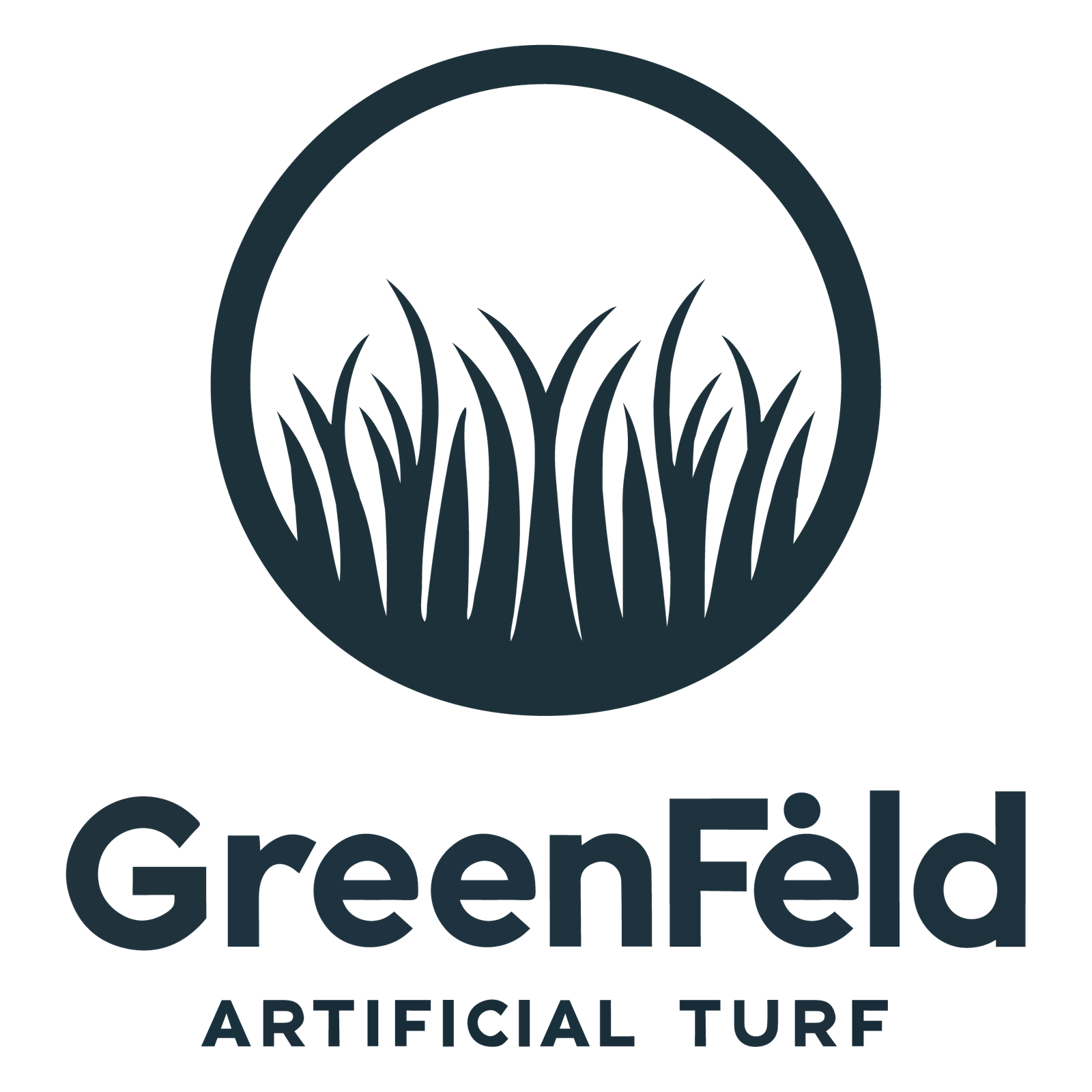Have you considered installing artificial grass on concrete but worry about durability and drainage issues? Ignoring these problems can lead to costly mistakes and dissatisfaction.
Installing artificial grass directly on cement is possible and practical, providing a quick upgrade to your space. Proper preparation and adhesive selection ensure a durable, attractive finish and effective drainage.

Artificial grass on concrete
Choosing the right installation method will impact the appearance, longevity, and safety of your artificial grass. Keep reading, and I’ll guide you through every essential step.
Can you put artificial grass directly on concrete?
Are you afraid that laying artificial grass directly on concrete might ruin the turf or cause drainage problems? Ignoring these concerns may lead to costly issues later.
Yes, artificial grass can be installed directly on concrete, provided the concrete surface is smooth, clean, and properly prepared for drainage. Adding padding or underlay helps achieve better results.

Artificial grass directly on concrete
Dive Deeper: Key Considerations for Direct Installation on Concrete
When installing artificial grass directly onto concrete, several key points must be addressed. A smooth and clean surface is essential because imperfections can become visible through the grass. Concrete should be free of cracks, debris, oil stains, and loose material to ensure strong adhesion.
Drainage is another crucial consideration. Concrete does not naturally allow water to pass through, so you must think about water flow. If the area is flat or prone to water pooling, installing drainage mats or drilling small drainage holes is necessary.
Adding padding or foam underlay under artificial grass will provide softness and comfort, reducing the risk of injury. The underlay also helps water drain more effectively. Here’s a simple overview:
| Consideration | Importance | Recommended solution |
|---|---|---|
| Surface quality | High | Smooth and clean concrete |
| Drainage | High | Drainage holes or mats |
| Underlay | Medium | Foam or rubber padding |
Taking these factors into account will ensure your artificial grass remains in great condition for many years.
What should you put down before laying artificial grass?
Are you uncertain about what goes beneath artificial grass? Skipping this step might result in poor drainage or an uneven lawn surface.
Before laying artificial grass on cement, you should use a foam or rubber underlay, geotextile membrane, or drainage mat. These materials protect the grass, improve drainage, and increase comfort underfoot.

Underlay for artificial grass
Dive Deeper: Types of Underlay and Their Benefits
Using the right underlay can greatly improve your artificial grass installation on concrete. Here are the most popular types and their benefits:
-
Foam Underlay: Foam provides cushioning, reducing impact during falls. It creates a softer feel, suitable for areas like playgrounds or recreational spaces. Foam is also effective in drainage improvement.
-
Rubber Underlay: Rubber underlay adds comfort and durability. It's resistant to wear and tear and is best for heavy foot traffic areas such as patios, walkways, and poolside areas.
-
Geotextile Membrane: A geotextile layer helps protect artificial grass from moisture accumulation, preventing mold growth. It also provides extra protection for turf backing.
-
Drainage Mats: Drainage mats significantly improve water runoff, reducing pooling issues on concrete surfaces. They are crucial in rainy or humid environments.
| Material | Comfort | Drainage | Durability | Ideal for |
|---|---|---|---|---|
| Foam | High | Good | Medium | Playgrounds, recreation |
| Rubber | Medium | Good | High | High traffic areas |
| Geotextile | Low | Excellent | High | Moisture-prone areas |
| Drainage Mats | Medium | Excellent | High | Rainy climates |
Choosing the right underlay ensures maximum benefit from your artificial grass.
What is the best adhesive for artificial grass to concrete?
Worried your artificial grass may lift or shift if you choose the wrong adhesive? Poor bonding can ruin your landscape's appearance.
Polyurethane-based adhesive is the best choice for fixing artificial grass to concrete. It offers strong, durable bonding, is weather-resistant, flexible, and ensures long-lasting results even under heavy use.

Artificial grass adhesive
Dive Deeper: Why Polyurethane-based Adhesive Is Ideal
When bonding artificial grass to concrete, choosing the correct adhesive significantly impacts the longevity and stability of your turf. Polyurethane-based adhesives have become the top choice due to several reasons:
-
Strong Bonding: Polyurethane adhesive creates a powerful and durable bond, keeping the grass securely in place even under continuous foot traffic or harsh weather.
-
Flexibility: Unlike other adhesives, polyurethane maintains flexibility once cured. This flexibility prevents cracking or separation caused by concrete expansion or contraction with temperature changes.
-
Weather Resistance: This adhesive withstands extreme temperatures, moisture, UV exposure, and humidity, maintaining its bond for many years without deterioration.
-
Easy Application: Polyurethane-based adhesives come in both liquid and paste form, simplifying the application process and allowing easy adjustments during installation.
Here's a brief overview:
| Feature | Polyurethane Adhesive |
|---|---|
| Strength | Excellent |
| Flexibility | High |
| Weather Resistance | Excellent |
| Ease of Application | Good |
Using polyurethane-based adhesive ensures that your artificial grass remains firmly attached, looking pristine for years to come.
How Do You Install Artificial Grass on Cement Step by Step?
Are you overwhelmed by the installation process and worried about making mistakes that could ruin your project?
To install artificial grass on cement, clean and prepare the surface, install drainage or underlay if needed, measure and cut the grass precisely, secure it using adhesive, and finally brush sand infill to finish.

Installation steps
Dive Deeper: A Detailed Step-by-Step Guide
Here’s a detailed step-by-step guide for installing artificial grass on cement:
Step 1: Surface Preparation
Ensure the cement surface is clean, free of debris, oils, and dry. Repair any cracks or uneven spots.
Step 2: Drainage
If necessary, drill small holes in cement or install drainage mats to ensure adequate water runoff.
Step 3: Underlay Installation
Lay foam, rubber underlay, or drainage mats for cushioning and improved drainage.
Step 4: Measuring and Cutting
Measure the area precisely. Cut artificial grass carefully, leaving some excess edges to trim later.
Step 5: Apply Adhesive
Spread polyurethane adhesive evenly over concrete. Lay grass immediately, smoothing out wrinkles and bubbles.
Step 6: Secure Grass
Press down firmly. Pay special attention to edges, ensuring complete adhesion.
Step 7: Trim Excess Edges
Cut off any extra grass carefully with a sharp knife or scissors.
Step 8: Apply Sand Infill
Spread silica sand infill evenly over grass. Brush the grass fibers upright for a natural look and added stability.
Following these steps will provide a professional, attractive finish for your artificial grass installation.
Conclusion
Installing artificial grass on concrete is straightforward. Preparing correctly, selecting the right underlay, adhesive, and following proper installation steps ensures a durable, appealing landscape upgrade.

